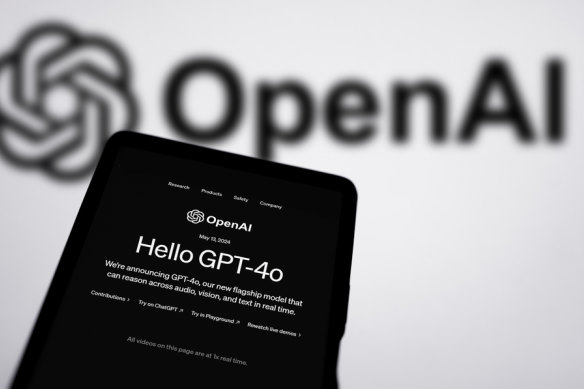
Since then, Microsoft has started to hedge its bet on OpenAI.
“We have continued to invest in OpenAI at many discrete points in the partnership,” Scott, Microsoft’s chief technology officer, said in a recent interview. “We are certainly the very largest investor of capital in them.”
But in March, Microsoft paid at least $US650 million to hire most of the staff from Inflection, an OpenAI competitor. Inflection’s former CEO and co-founder, Mustafa Suleyman, oversees a new Microsoft group that is working to build AI technologies for consumers based on OpenAI software. He is also the point person for Microsoft’s long-term effort to build technologies that could replace what the company is getting from OpenAI, according to two people familiar with Microsoft’s plans.
“Microsoft could be left behind if it is only using OpenAI technologies,” said Gil Luria, an analyst at investment bank D.A. Davidson. “It is a real race — and OpenAI may not win it.”

OpenAI expected to spend at least $5.4 billion in computing costs through the end of 2024.Credit:
After Microsoft backed away from the discussions about additional funding, OpenAI was in a bind. It needed more cash to keep its operations going, and its executives chafed at the exclusivity of the contract. Over the past year, the AI company repeatedly tried to negotiate to lower the cost and allow it to buy computing power from other companies, according to seven people familiar with the discussions.
In June, Microsoft agreed to an exception in the contract, six people with knowledge of the change said. That allowed OpenAI to sign a roughly $US10 billion computing deal with Oracle for additional computing resources, according to two people familiar with the deal. Oracle is providing computers packed with chips suited to building AI, while Microsoft provides the software that drives the hardware.
And in recent weeks, OpenAI and Microsoft negotiated a change to a future contract that reduces how much Microsoft will charge the smaller company for computing power, although the exact terms were unclear, according to a person familiar with the change.
While it was looking for computer power alternatives, OpenAI also raced to broaden its investors, according to two people familiar with the company’s plan.
Earlier this month, OpenAI closed a $US6.6 billion funding round led by Thrive Capital, with additional participation from Nvidia, MGX and others. Apple did not invest, but Microsoft also participated in the funding round.
OpenAI expected to spend at least $US5.4 billion in computing costs through the end of 2024, according to documents reviewed by The New York Times. That amount was expected to skyrocket over the next five years as OpenAI expanded, soaring to an estimated $US37.5 billion in annual computing costs by 2029, the documents showed.
It is not clear how much the recent tweaks to the partnership between OpenAI and Microsoft will alter that trajectory, but Microsoft executives were happy with the changes, according to a person familiar with the company’s strategy. The tech giant can continue to benefit from OpenAI’s improving technologies, while the startup continues to pay the tech giant for substantial amounts of computing power.
This article originally appeared in The New York Times.
The Business Briefing newsletter delivers major stories, exclusive coverage and expert opinion. Sign up to get it every weekday morning.









 Add Category
Add Category